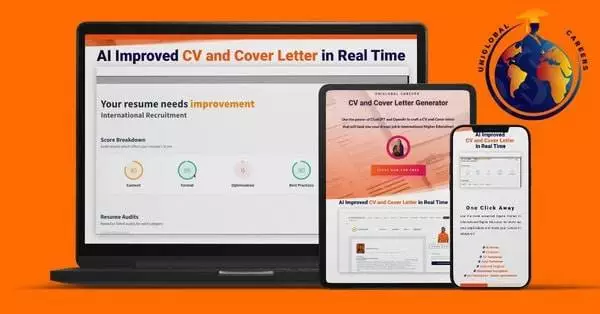Artificial Intelligence, or AI, has the potential to revolutionize the way we conduct joint research projects. By integrating AI tools in research collaboration, researchers can benefit from a wide range of advantages that can enhance their data analysis, facilitate communication, and accelerate innovation.
Understanding AI in Joint Research Projects
To fully appreciate the benefits of AI in joint research projects, it is essential to understand what it is and how it can be used to improve collaboration among researchers. AI refers to computer systems that can perform complex tasks that typically require human intelligence, such as learning, reasoning, and problem-solving.
Defining Artificial Intelligence
Artificial intelligence, or AI, is a rapidly growing field that aims to create intelligent machines that can think and learn like humans. AI is an umbrella term used to describe computer systems that can perform complex tasks that typically require human intelligence, such as learning, reasoning, and problem-solving.
In recent years, AI has made significant progress in several areas, including natural language processing, computer vision, and machine learning. These advancements have led to the development of intelligent systems that can perform tasks that were once thought to be exclusive to humans, such as playing complex games like chess and Go, recognizing faces and objects in images and videos, and even driving cars autonomously.
The Role of AI in Research Collaboration
In joint research projects, AI can play a significant role in improving data analysis and interpretation, facilitating communication and collaboration, and accelerating innovation and discovery.
One of the key benefits of using AI in research collaboration is its ability to analyze large volumes of data quickly and accurately. This can be particularly useful in fields such as genomics, where researchers need to analyze vast amounts of genetic data to identify patterns and insights. AI can also help researchers identify correlations and connections between different datasets, which can lead to new discoveries and insights.
Another way that AI can improve research collaboration is by facilitating communication and collaboration between researchers. AI-powered chatbots, for example, can help researchers communicate more effectively by providing real-time translation services and answering common questions. AI can also help researchers collaborate more effectively by providing tools for real-time collaboration, such as shared workspaces and virtual whiteboards.
Finally, AI can accelerate innovation and discovery by automating time-consuming tasks and freeing up researchers to focus on more creative and innovative work. For example, AI-powered tools can automate the process of literature review, allowing researchers to quickly identify relevant studies and insights. AI can also help researchers generate new hypotheses and ideas by analyzing large datasets and identifying patterns and correlations that might not be immediately apparent to human researchers.
In conclusion, AI has the potential to revolutionize research collaboration by improving data analysis and interpretation, facilitating communication and collaboration, and accelerating innovation and discovery. As AI continues to advance, it is likely that we will see even more innovative applications of this technology in joint research projects.
Enhancing Data Analysis and Interpretation
Artificial Intelligence (AI) has revolutionized the way researchers conduct joint research projects. One of the most significant advantages of using AI in such projects is the ability to enhance data processing speed, identify complex patterns, and reduce errors. The following sections will discuss these benefits in detail.

Improved Data Processing Speed
Traditional data analysis can be time-consuming and prone to errors. By implementing AI tools, researchers can automate data processing, which can save time and improve accuracy. AI algorithms can process vast amounts of data in a matter of seconds, which would take humans hours or even days. This increased speed allows researchers to focus on the analysis and interpretation of the data, rather than spending time on manual data processing.
Moreover, AI algorithms can learn from previous data processing tasks and improve their performance over time. This means that the more data they process, the better they become at identifying patterns and anomalies.
Advanced Pattern Recognition
AI algorithms are designed to identify complex patterns that are difficult for humans to detect. By using these algorithms, researchers can quickly analyze large datasets and identify correlations that may have gone unnoticed. This can lead to new insights and discoveries that were previously hidden in the data.
For example, AI algorithms can be used to analyze medical data and identify patterns related to disease diagnosis and treatment. This can help doctors make more accurate diagnoses and develop personalized treatment plans for their patients.
Reducing Human Error
In joint research projects, human error can lead to costly mistakes and delays. By using AI, researchers can minimize the risk of errors and improve the overall accuracy of their results. AI algorithms can process data without any bias or preconceptions, which can reduce the risk of errors caused by human judgment.
Moreover, AI algorithms can identify errors in data processing and alert researchers to potential issues. This can help researchers correct mistakes before they become a significant problem.
In conclusion, AI has the potential to revolutionize the way researchers conduct joint research projects. By enhancing data processing speed, identifying complex patterns, and reducing errors, AI can help researchers make new discoveries and improve the accuracy of their results.
Facilitating Communication and Collaboration
Effective communication and collaboration are critical components of joint research projects. AI tools can streamline project management, facilitate real-time data sharing, and improve communication among researchers located in different parts of the world.
The importance of communication and collaboration cannot be overstated in research projects. It is essential for researchers to work together, share their findings, and collaborate to achieve their goals. With the help of AI tools, researchers can streamline their communication and collaboration processes, making their work more efficient and effective.
Streamlining Project Management
AI-powered project management tools can automate routine tasks, reduce administrative burdens, and free up time for researchers to focus on more critical aspects of their work. These tools can help researchers manage their projects more efficiently, ensuring that they meet their deadlines and achieve their goals.
For instance, AI-powered project management tools can help researchers track their progress, assign tasks, and monitor their team’s performance. These tools can also provide real-time updates on project status, allowing researchers to identify potential issues and take corrective action quickly.
AI-Powered Communication Tools
AI-enabled communication tools can help researchers communicate more effectively and capture critical information. These tools can translate messages in real-time, summarize conversations, and highlight key points, reducing the risk of miscommunication.
Moreover, AI-powered communication tools can help researchers overcome language barriers, enabling them to communicate with colleagues who speak different languages. This feature is particularly useful for international research projects, where researchers may come from different countries and speak different languages.
Real-Time Data Sharing
AI tools can enable real-time data sharing and collaboration among researchers working in different parts of the world. By using these tools, researchers can quickly share data, analyze results, and make informed decisions.
Real-time data sharing is particularly useful for research projects that involve large amounts of data. With the help of AI tools, researchers can share data in real-time, allowing them to analyze the data more efficiently and make faster decisions.
Furthermore, AI-powered data sharing tools can help researchers identify patterns and trends in the data, enabling them to make more informed decisions. These tools can also help researchers identify potential issues and take corrective action quickly.
Accelerating Innovation and Discovery
By using AI in joint research projects, researchers can accelerate innovation and discovery, leading to faster results and more significant breakthroughs. This is especially important in fields such as medicine, where time is of the essence in finding new treatments and cures for diseases.

One example of AI accelerating discovery is in drug development. By analyzing vast amounts of data on chemical compounds and their interactions, AI algorithms can identify potential new drugs and predict their effectiveness. This saves researchers valuable time and resources in the early stages of drug development.
AI-Driven Hypothesis Generation
AI algorithms can analyze vast amounts of data from various sources, leading to the creation of new hypotheses and research questions. By using these tools, researchers can quickly develop new ideas and move their research forward more efficiently. For example, in the field of astronomy, AI algorithms have been used to analyze data from telescopes and identify new phenomena, such as gravitational waves.
Optimizing Experimental Design
AI algorithms can help researchers design experiments that are more efficient and effective. By analyzing data, these tools can identify optimal conditions for experiments, reducing the time and cost of conducting research. In the field of materials science, AI has been used to design new materials with specific properties, such as strength or conductivity.
Furthermore, AI algorithms can also help researchers analyze their experimental data more efficiently. By identifying patterns and correlations in the data, these tools can provide insights that may have been missed using traditional statistical methods.
Expediting Publication and Dissemination
AI tools can automate the process of publishing and disseminating research findings. By automating these tasks, researchers can share their findings more quickly and focus on the next stage of their research. This is especially important in fields such as public health, where timely dissemination of research findings can have a significant impact on policy and practice.
Moreover, AI algorithms can also help researchers identify relevant publications and research that may have been missed using traditional search methods. This can lead to more comprehensive literature reviews and a better understanding of the current state of research in a particular field.
Conclusion
In conclusion, AI has the potential to transform the way we conduct joint research projects. By using AI tools, researchers can benefit from enhanced data analysis, improved communication and collaboration, and accelerated innovation and discovery. By embracing these new technologies, researchers can move their research forward quickly and efficiently, leading to more significant breakthroughs and discoveries.


